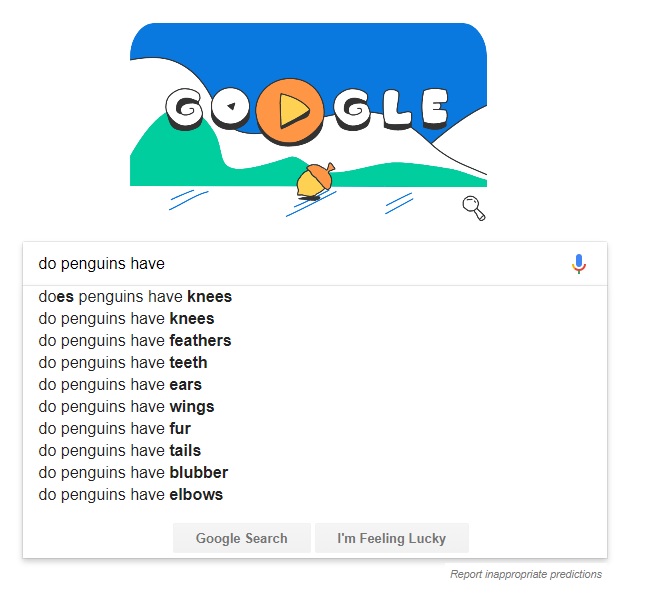How to manage an e-commerce blog without blogging about products

Author
When it comes to running a company blog, we must think outside of the box (in this case outside of our internet shopping baskets) and imagine what the client would actually want to read about. By empathizing with our audience and understanding their problems, we can create a whole list of subjects to write about, which will not only optimize the website for search engines but will also bring in valuable new readers that in time may become loyal customers.
Almost everyone knows that running a company blog is the most popular form of content marketing. However, not many people can point out good company blogs. By good, we mean up to date, regularly posted on, attractive and above all – valuable to your audience.

Companies mass-produce blogs. They create their own media and flood the internet with huge amounts of content that disappear in a sea of similar texts. If you don’t want to drown with the rest, you must treat your blog as one of the key points of your company’s communication strategy. It should be run consistently and with thought, focusing on your customers’ exact needs.
So here’s the question: how and what should you write on your company blog?
There is a difference between selling and helping
This is how content marketing differs from traditional advertising. Trust your customers’ intelligence. If they want to read about products, they will find accurate descriptions onyour website.
It’s best to stick to this rule: sell on your website, help on your blog.
1. Get closer to your audience
First of all, get to know your audience. Talking to friends is a lot more pleasant than talking to strangers, right? When you get to know your readers it will be easier for you to figure out what you want to write about and in what style.
Finding your audience is the first step to getting to know your readers. Touchpoints really do come in handy here. Imagine your typical customer. How do they spend their free time? What do they like? Where do they go out? What media and devices do they use? Answering these kinds of questions will help accurately determine who you are writing for and how you will write on your blog.
You can easily find potential readers on the internet. First of all, analyze all the channels you use for communication, including your social media. Don’t forget about groups and forums that talk about your brand. Looking up your competition is also advised. Open yourself up to new audiences, but keep in mind that you cannot always be “for everyone”.
Mysaver is an interesting case of building an engaged audience on a company blog. The Goldenmark Group realized that buying gold isn’t very popular in Poland, so they decided to launch an internet magazine about money. Experts writing for the blog talk about the wide aspects of saving and investing money, but they also touch on the issues of investing in gold and other precious metals in a way that is comprehensible to people that have never done it before.
2. Get to know their problems
Once you get to know your audience it’s time to recognize their problems. You’ll most likely find them in the form of search engine entries.
Apparently, there are no stupid questions – there are only those we don’t have answers for. We are turning to Google more and more often to find the answers. We aren’t afraid to ask “does beer make you fat?” or “do penguins have knees?” or even “is the Earth flat?”

According to Internet Live Stats, 16-20% of the questions asked on a daily basis haven’t even been asked before. This gives us plenty of room to create valuable content and it’s an indication that many customers still need to be catered to with advice.
Good keyword research is the base of SEO and content marketing. It also provides the opportunity to learn about the most frequently asked questions in any given niche. If you examine voice search, you will notice the increasing tendency of most questions beginning with words such as how, why and where. Every single one of those queries can be turned into a blog post that will answer the user’s needs.
There are plenty of free and paid tools you can use, like the popular Google Keyword Planner, Keyword Tool, and Übersuggest. Remember, don’t overlook Google’s suggested answers – sometimes uncle Google knows what we want better than we know 😉
Sometimes your customers will come to you with a certain problem on their own. Read the comments on your blog, on your social media and individual messages. Even if they don’t necessarily concern your product (price, warranties, etc.), they can be the inspiration for your next post.
3. Answer your audience’s needs
When we answer our potential clients’ questions we give them what they are looking for. And when we do it correctly, gaining their trust as professionals, they will certainly come back for more advice. This is the main difference between selling and helping.
If you decide to run a blog as a form of communication with your client, you don’t have to limit yourself to text. Short videos, informative infographics and photo guides will definitely diversify your content section. You can spice up your texts as well by mixing up step by step guides with collaborations with experts, etc.
When searching for ideas and their “packaging”, it’s worth using different creativity boosting techniques. Even the most popular brainstorm or mind map can lead to unexpected solutions regarding a given keyword. They should be detached from your product but linked to your company. Creativity is a must when it comes to difficult niches. Do you sell coffins or work apparel? If so, you might want to use the Disney Method or de Bono’s “Six Thinking Hats”.
A good example of such practice is Morizon’s blog. The company deals with real estate, but their blog consists of easy to read articles on interior design, architecture, city planning, oddities and even legal advice concerning renting. Basically, you can find nearly anything regarding your living space, plus the extra “ask an expert” category strongly indicates that you will get help there.
Write words, not keywords
Texts written purely with SEO in mind have gone out the window lately. And I’m glad for that! Even though there’s still a lot more automatically generated content being made, it doesn’t pop up anywhere near the top of the search results. Why?
Google’s goal is to present the best-fitted results to the client’s sought after information. To achieve this, Google introduced two key algorithms for content marketing – Panda and Penguin. Implemented in 2011, the Panda algorithm struck down low-quality websites (websites overloaded with ads and weak content). Google’s Penguin algorithm, which was released a year later, lowered the rank of pages that used techniques forbidden by Google’s webmaster guidelines (unnatural links, stuffing content with keywords, etc.).
If Google is putting its users first, so should good content marketers.
When optimizing an article for a certain keyword, remember that you’re not doing it just for robots, but for humans. Google’s understanding of context and synonyms is growing rapidly, all thanks to the Hummingbird algorithm. Implemented in 2013, it changed the way Google interprets search entries. Google now shows answers that are actually helpful, rather than showing content that has the most keywords stuffed into a sentence.
Be honest – authenticity counts
Communication-based on transparency and authenticity is the answer to the decline of trust towards companies. Omnipresent fake news, aggressive advertisement and the knowledge that anyone can say anything on the internet has caused users to look even harder for media they can trust.
How to build credibility in your audience’s eyes? Encourage your co-workers to contribute to a company blog. Mention them by name. Mix up your content keeping the idea of “the more people the more ideas” in mind. Invite other professionals to write for you (which will give your platform an extra dose of expertise).
Don’t be afraid of hate – don’t block the comments section. You will lose the opportunity to read potential questions and feedback from the people you write for. Show them that you actually want to help and not just produce content.

A great example of this is the 8a blog. 8a is a Polish mountaineering shop. Their blog is written with passion for climbing and hiking, which was achieved by hiring actual travelers and mountaineers. Besides product reviews and advice, the blog offers a lot more unique content like the authors’ personal experiences, etc.
The most important algorithm is your customer
In the end, it’s the reader that decides about the fate of our content. The best praise we can get from our audience is definitely something along the lines of “this was written for me”. By getting to know their problems and giving them the advice they need, we gain valuable readers and conscious buyers.
The last but not least advice is: Have fun. It may sound trivial, but if running a blog becomes a torment for you it will come out in your posts. And then, who will want to read your scribbles?